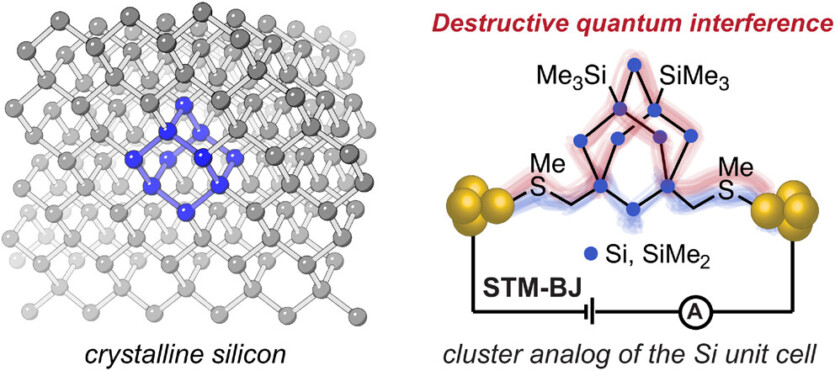
American scientists from the University of California, Riverside have discovered a new way to control electrons in crystalline silicon — a key material widely used in modern electronics.
In particular, the researchers found that at the nanoscale, electrons behave more like waves than solid particles. The scientists made sure that by carefully adjusting the symmetrical position of atoms in silicon molecules, it is possible to cause or stop the process of destructive interference. This phenomenon makes it possible to effectively turn electrical conductivity on and off, similar to a nanoscale switch.
«We found that when tiny silicon structures have high symmetry, they can neutralize the flow of electrons in a way similar to noise-canceling headphones Interestingly, we can control this»,— says the head of the study, is a professor of chemistry at the University of California, Riverside, Tim Su.
The researchers was made at a time when further reducing the size of silicon chips is becoming an increasingly serious problem. Existing methods offer etching of chips on silicon wafers or doping with trace amounts of other elements to improve electrical compliance.

Despite the effectiveness of these methods, they are currently close to their limit. There is a limit to the possibilities of creating small chips, and adding atoms cannot eliminate the complexities associated with quantum phenomena.
The researchers used a chemical method, assembling the silicon molecules atom by atom, rather than forming them from larger structures. This allowed them to more precisely control the placement of atoms and the movement of electrons through silicon.
Quantum effects, which involve the passage of electrons through insulating layers, pose problems for existing electronic device designs. The results of the study demonstrate that instead of trying to eliminate these effects, engineers could harness them.
«Our work shows how the molecular symmetry in silicon leads to interference effects that control the movement of electrons in it. And we can turn this interference on and off by controlling the location of the electrodes relative to our molecule», — emphasized Prof. Tim Su.
This is one of the first demonstrations of the effect in three-dimensional diamond-like silicon — the same structure used by in commercial chips. In addition, the results of the study can contribute to the development of a new generation of thermoelectric devices that generate electricity from heat
The results of the study are published in the journal ACS
Source: SciTechDaily

Spelling error report
The following text will be sent to our editors: